
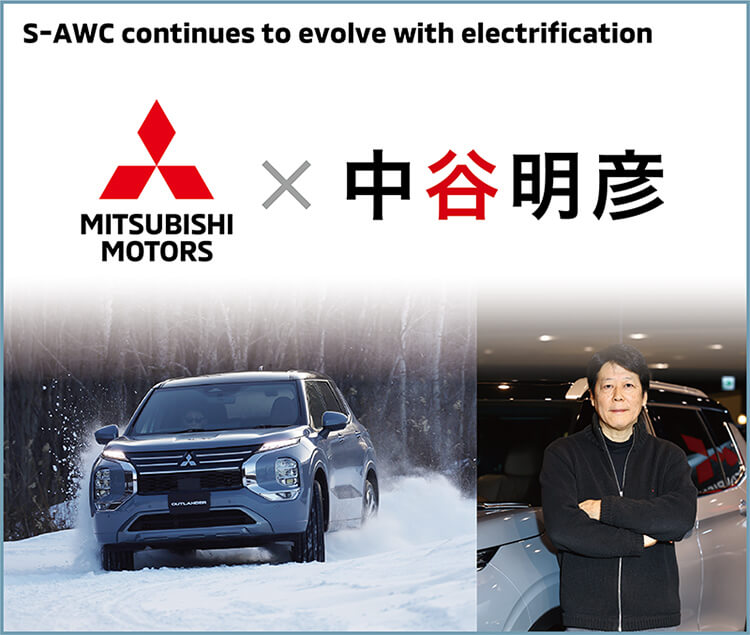
Racing Driver & Automotive Journalist
Akihiko Nakaya
Precise handling and superior vehicle stability can be achieved, and drivers can enjoy a safe, secure, and comfortable ride if the capabilities of the four tires can be harnessed with good balance. That is what Mitsubishi Motors all wheel control (AWC) is all about. Mitsubishi Motors has been advancing the evolution of four-wheel control technology based on this development philosophy. Lancer Evolution can be considered the model which symbolizes that trajectory. Mitsubishi Motors has honed its vehicles while competing in grueling rallies and refined its control technologies such as Active Yaw Control (AYC) and Active Center Differential (ACD) through a wide variety of motorsports while reflecting them in commercial models. The final form Lancer Evolution X was brought to fruition as Super-All wheel control (S-AWC) that also had upgraded braking control. However, S-AWC was not the endpoint of that evolution. When the 2010s started, Mitsubishi Motors would work on electrification while also continuing the push toward further evolution of S-AWC. Akihiko Nakaya, who was involved in the development of the Lancer Evolution series as a racing driver and now works as an automotive journalist, spoke to us about the latest S-AWC.
The importance of refining maximum performance
Why has Mitsubishi Motors been so dedicated to AWC? According to Nakaya, “Even ordinary drivers may find themselves in situations that push the limits of their vehicles. The only way to avoid that danger is to raise the cars’ maximum performance. We improved the maximum performance of our cars while taking the Lancer Evolution for repeated test drives on the circuit.”
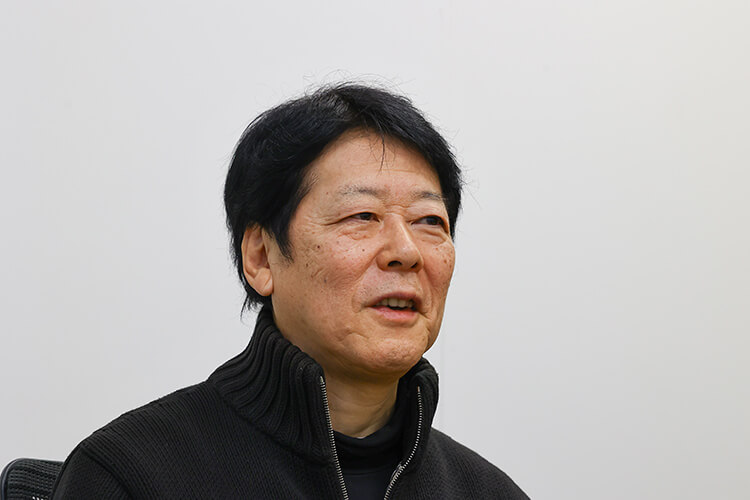
With the circuit as the stage, Nakaya leveraged his status as a racing driver to refine the performance of AWC
Grueling situations like those found in motorsports are not the only times when maximum performance is needed. The capability to get away from dangerous situations on typical roads is another aspect of maximum performance. On every corner of the circuit, there are emergency avoidance situations that typical drivers might encounter once in their lives. By refining its proprietary four-wheel control technology in the motorsports arena, Mitsubishi Motors is providing drivers with high safety performance in addition to driving pleasure.
“In addition to four-wheel control, fundamental car making is also important for improving performance. First is to build solid cars. Then, compete in motorsports and channel technologies established there into commercial models. I think that cycle itself is what Mitsubishi Motors is all about.”
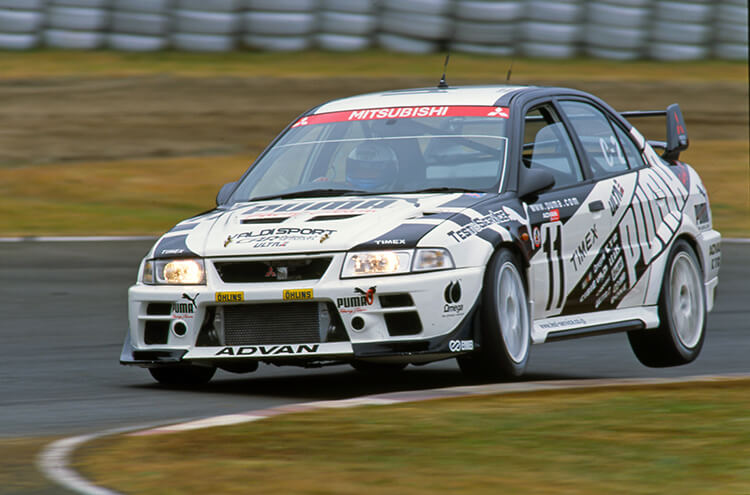
Mitsubishi Motors fundamentally aims to take technologies homed in motorsports and channel them into commercial models
The Lancer Evolution series completed that mission with the X (10), but Mitsubishi Motors S-AWC has continued to evolve since then, primarily in SUVs. The Outlander released in 2012 had S-AWC with refined electronically controlled 4WD.
For the subsequent Outlander PHEV, a new S-AWC system based on Twin Motor 4WD was developed, and Mitsubishi Motors has been actively evolving the S-AWC even with different drive systems. Nakaya also has his sights set on innovation through electrification. “In the Lancer Evolution, the front and rear wheels were controlled with a mechanical structure including a propeller shaft connecting the front with the rear, and a center differential gear. In Twin Motor 4WD which drives with the front and rear independent of each other, driving force to the front and rear can be distributed as desired by controlling their respective outputs. In addition to enabling instant response, this also dramatically expanded the breadth of control. Vehicle electrification holds further potential for S-AWC. It will be a major turning point.”
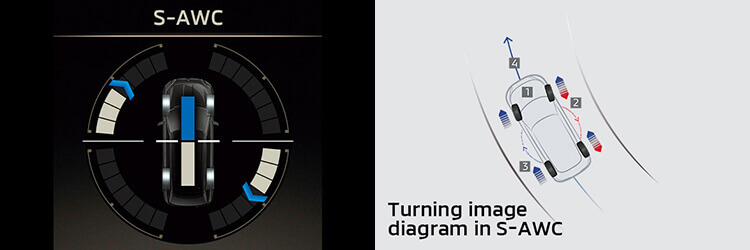
Active front-rear and left-right control, including braking, to improve safety
Pikes Peak International Hill Climb brought about significant evolution in Twin Motor 4WD S-AWC
In its pursuit to evolve S-AWC through electrification, Mitsubishi Motors also remained dedicated to the origin of that quest— improving maximum performance. To improve the maximum performance of its mass-produced EVs, the company participated in the Pikes Peak International Hill Climb (hereafter “Pikes Peak”) in the MiEV Evolution, a dedicated competition vehicle equipped with an EV system based on EV components from the i-MiEV, the world's first mass-produced electric vehicle. Pikes Peak is a hill climb competition held in the U.S. Rocky Mountains. Known as a “Race to the Clouds,” the course climbs about 1,500 meters in elevation and has more than 150 curves in one go. Mitsubishi Motors sent Hiroshi Masuoka, who won the Dakar Rally for two consecutive years, as both a driver and as team manager— and ended up taking second place in the electric vehicle class for two straight years. In 2014, the MiEV Evolution driven by Greg Tracy took first place in the Electric Modified Division.
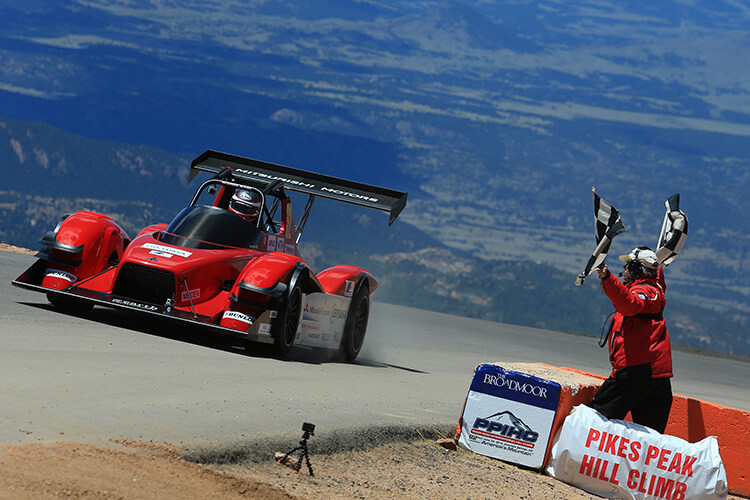
The MiEV Evolution topped the electric car class in 2014
To verify the reliability of mass production technologies and potential of advanced technologies for the Outlander PHEV, the world’s first SUV-type plug-in hybrid EV, Mitsubishi Motors also competed in the Asia Cross Country Rally from 2013 through 2015 and completed the race all three years. It also exceeded expectations in other competitions with grueling road conditions, which included completing the Baja Portalegre 500 held in the Portalegre District of Eastern Portugal in 2015. The high reliability, durability, and road handling of electric vehicles were proven through these competitions. Like in the days of the Lancer Evolution, Mitsubishi Motors not only evolved S-AWC through motorsports that require maximum performance, but also produced significant added gains at handing down technologies and developing engineers in the process.
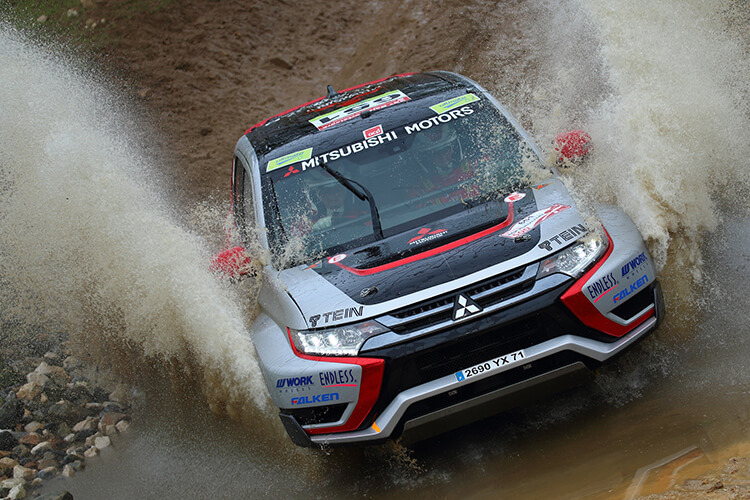
Although it was based on a production car, it demonstrated its performance to the fullest in cross-country rallies.
Testing out the Outlander PHEV with drastically improved drivability, along with the latest S-AWC
Mitsubishi Motors engineers have carried on their passionate pursuit of the joy of driving and safety excellence into the 2020s, driving the further evolution of S-AWC. In 2021, braking control type AYC which optimally controls braking force between the left and right wheels was also added to the rear wheels of the fully redesigned Outlander PHEV. It became possible to reduce the workload of the front wheels and harness the maximum capabilities of all four tires in even greater balance. Drastic improvements to make it “the best and most powerful Outlander ever” then followed in 2024.
In addition to raising the battery capacity by around 13%, the battery output was also improved and the maximum output of the PHEV system was raised by around 20%. Nakaya also recognized that, “Its road performance makes a very different impression. The driving force of the rear wheels was clearly improved by the battery. That is just one example of how the performance of the underlying car has been significantly upgraded.”
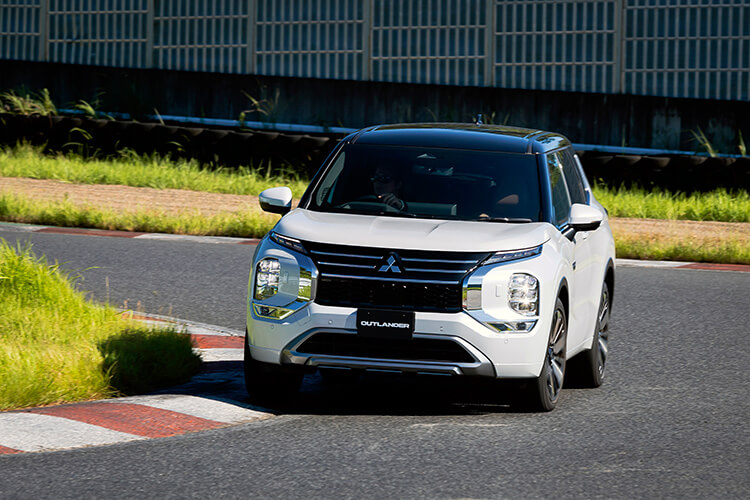
Evolved S-AWC also shows off its performance on the circuit
How exactly then did S-AWC evolve? According to Nakaya, “We also took the S-AWC for test drives on snowy roads after it was improved, and I got the impression that a lot of work had gone into the system. From the four-wheel drive control to the control of the two motors, it can be driven differently in various road settings. Combined also with braking control type AYC, the integrated control that also includes regenerative braking during deceleration is clearly a step up. It delivers that distinctively Mitsubishi Motors type of road performance.” Having spent many years alongside the evolutionary path of Mitsubishi Motors four-wheel control technology, Nakaya shares his own unique analysis. “When the power changes, the overall balance changes too. However, ‘cornering well despite being 4WD’ which was achieved in the Lancer Evolution days has been passed down fully intact, and even with the improvements and increased power, it still handles true to the driver’s intentions with a feeling of reassurance even in settings like snowy roads where the tires cannot deliver much grip. The control technologies for the two motors in the front and rear of the Outlander PHEV are world-class and also highly compatible with S-AWC. How to design the chassis and boosting its potential as a car while maintaining its overall harmony, those will be the keys going forward.”

S-AWC enables smooth driving even on slippery snowy roads
The evolution of a car is never-ending. Nakaya points out, “After the improvement to the Outlander PHEV we could actually see new challenges, particularly whether we could further increase the road-holding ability—in other words, the sense of connectedness with the road surface—on dry roads for the rear wheels which had increased output. We will need to set loftier goals than ever to achieve that. ” This type of trial and error was also frequently repeated with the Lancer Evolution. “Back then, we were playing a cat-and-mouse game where every time the road performance evolved, we also had to evolve the control. That cycle is grueling from the perspective of the engineers, but it is also precisely how evolution is actually achieved. Never being satisfied regardless of the level of polish and perfection, the goals organically rise in difficulty and trying to achieve them leads to further refinements in performance. I’m looking forward to seeing how the challenges that have come into focus now with S-AWC will be overcome. If it’s Mitsubishi Motors, you know they’ll overcome them,” says Nakaya with a smile.
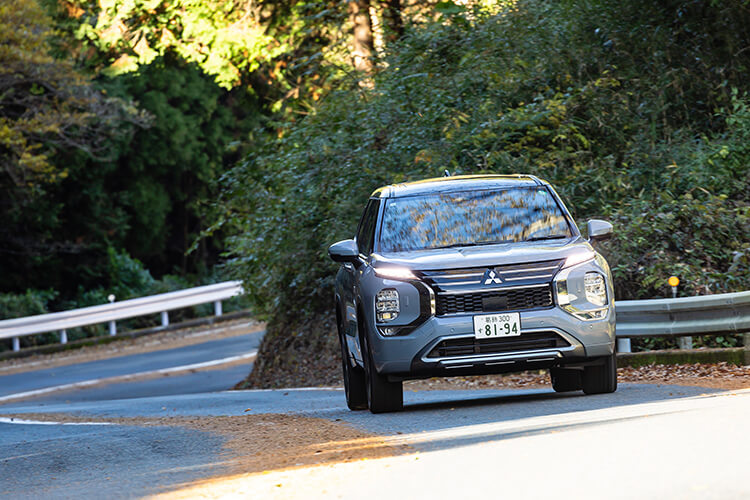
Stay tuned for continued refinements, including to road-holding ability to accommodate increased electric motor output
Even greater possibilities for S-AWC technology in the age of electrification
Mitsubishi Motors four-wheel control has a long history and has steadily evolved along with the times and the evolution of cars. Even now in the age of electrification, the refinement of S-AWC will continue along with the ongoing pursuit of precise handling and superior vehicle stability. That evolution will continue in a constant pursuit of greatness, without slowing down. Nakaya also declares that “the latest S-AWC is the greatest S-AWC.” While he is no longer a presence at development sites, Nakaya is looking forward to big things in the further evolution of four-wheel control from the perspective of a journalist. When the next S-AWC arrives, what kind of control will it be? Stay tuned.
[Akihiko Nakaya]
He has been active as a racer and journalist since his university days. In 1985 he turned into a professional racer and won the opening race of the Mirage Cup. That same year, he drove a Mitsubishi Starion in the first ever Inter TEC race, which featured bruising competition between Group A vehicles. In 1988, he was the All-Japan F3 champion. He provided his advice from the standpoint of a racing driver, supporting the development of Lancer Evolution models V through X from behind the scenes. Driving Lancer Evolution cars, he recorded 50 victories and five full-year championships in Japanese endurance races "Super Taikyu Series”.